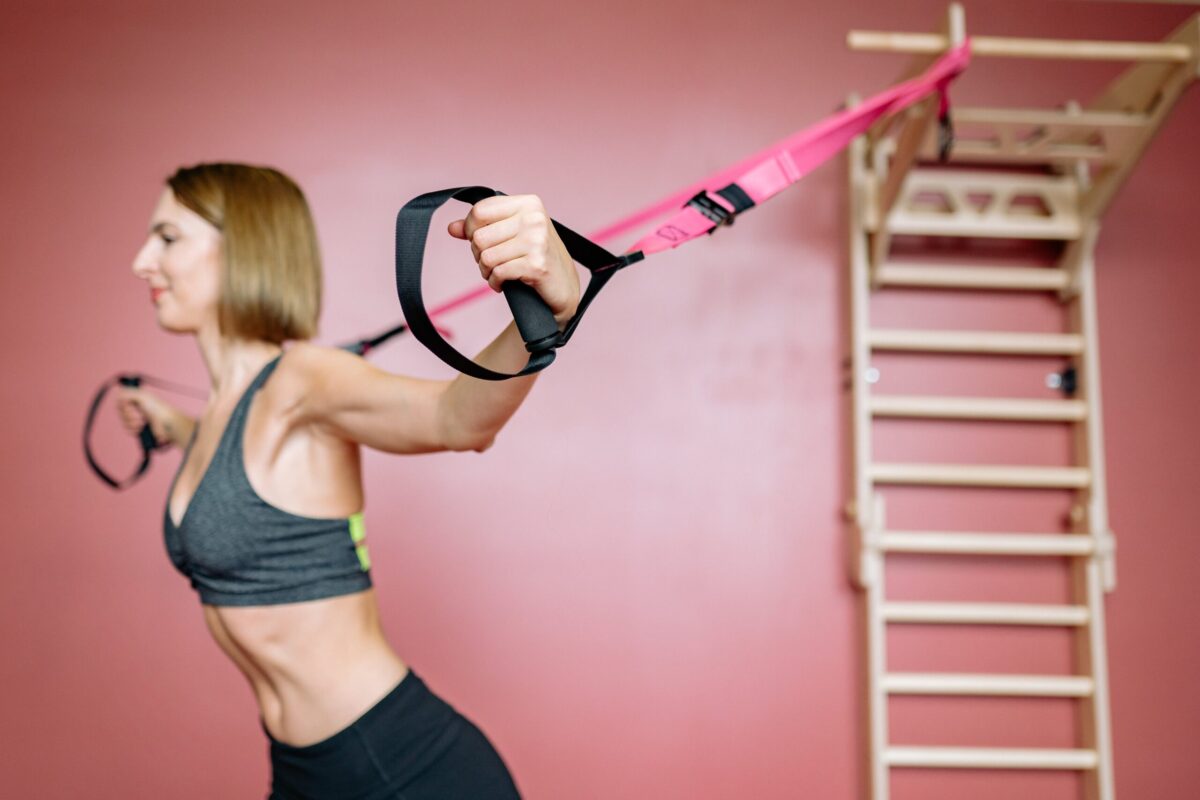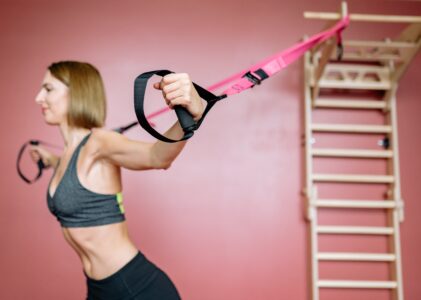Maximize your swimming potential with targeted resistance training. Learn why it’s crucial, which muscles to focus on, suggested exercises, and the debate of reps vs. weight.
Swimming is a demanding sport that requires exceptional strength, endurance, and technique. To excel in the water, swimmers need more than just laps in the pool; they need a well-rounded training regimen that includes resistance training. In this comprehensive guide, we will explore the world of swimmer resistance training, covering its importance, the key muscles to target, suggested exercises, and the ongoing debate between reps and weight. Whether you’re a competitive swimmer or just looking to improve your swimming performance, this article has you covered.
Why is Resistance Training Crucial for Swimmers?
Swimmers, like athletes in any other sport, can greatly benefit from resistance training. Here are some compelling reasons why incorporating resistance training into your swimming routine is crucial:
- Enhanced Power and Propulsion: Swimming relies heavily on the power generated by your muscles. Resistance training helps you build muscle strength and power, translating into stronger strokes and better propulsion through the water.
- Injury Prevention: Strong and well-conditioned muscles can help prevent common swimming-related injuries, such as shoulder impingement or lower back strain. Resistance training can improve stability and reduce the risk of overuse injuries.
- Increased Endurance: Resistance training can enhance your overall endurance, allowing you to swim longer and maintain peak performance throughout a race or training session.
- Stroke Efficiency: By strengthening specific muscle groups, you can improve your stroke technique and efficiency, reducing drag and energy wastage.
- Mental Toughness: Overcoming the resistance in strength training can build mental toughness, which can be a valuable asset during grueling swim competitions.
Targeted Muscles for Swimmer Resistance Training
Before delving into specific exercises, it’s essential to understand which muscle groups to target when engaging in swimmer resistance training. Focusing on these key muscles will help you achieve a balanced and effective workout routine:
1. Latissimus Dorsi (Lats)
The latissimus dorsi muscles, often referred to as the “lats,” play a crucial role in swimming. These large muscles in your upper back and sides are responsible for your arm’s power during the pull phase of each stroke.
2. Shoulders (Deltoids)
Strong deltoid muscles are essential for shoulder stability and an efficient arm recovery in the freestyle and butterfly strokes. A well-developed shoulder girdle can help prevent injuries and improve stroke mechanics.
3. Core Muscles (Abdominals and Lower Back)
A strong core is the foundation of swimming. It provides stability and balance in the water, allowing swimmers to maintain a streamlined body position. Engaging your abdominal and lower back muscles is crucial for reducing drag and improving your overall technique.
4. Quadriceps and Hamstrings
While leg muscles may not be the primary focus of swimmer resistance training, they should not be neglected. Quadriceps and hamstrings provide essential stability during kicking movements, especially in the breaststroke and freestyle.
5. Pectoral Muscles (Chest)
The pectoral muscles contribute to the arm’s power during the pull phase and help maintain proper body alignment. Strengthening your chest muscles can improve your overall swimming performance.
Suggested Exercises for Swimmer Resistance Training
Now that we’ve identified the key muscle groups, let’s explore some effective exercises to target them. Incorporating these exercises into your training routine will help you build strength and improve your swimming performance:
1. Lat Pulldowns
- Target Muscles: Latissimus Dorsi (Lats)
- Equipment: Cable machine with a lat pulldown bar
- How to Perform:
- Sit at the lat pulldown machine with your knees secured under the pads.
- Grasp the bar with a wide, overhand grip.
- Pull the bar down to your chest, squeezing your lats.
- Slowly return the bar to the starting position.
- Reps and Sets: 3 sets of 10-12 reps
2. Shoulder Press
- Target Muscles: Shoulders (Deltoids)
- Equipment: Barbell or dumbbells
- How to Perform:
- Sit or stand with your back straight.
- Hold the barbell or dumbbells at shoulder height.
- Press the weight overhead until your arms are fully extended.
- Lower the weight back to shoulder height.
- Reps and Sets: 3 sets of 8-10 reps
3. Planks
- Target Muscles: Core Muscles (Abdominals and Lower Back)
- Equipment: None (bodyweight exercise)
- How to Perform:
- Begin in a push-up position with your forearms on the ground.
- Keep your body in a straight line from head to heels.
- Hold the position for as long as possible, engaging your core.
- Reps and Sets: Hold for 30-60 seconds, 3 sets
4. Leg Press
- Target Muscles: Quadriceps and Hamstrings
- Equipment: Leg press machine
- How to Perform:
- Sit in the leg press machine with your feet shoulder-width apart on the platform.
- Push the weight upward by extending your knees.
- Slowly return the weight to the starting position.
- Reps and Sets: 3 sets of 10-12 reps
5. Chest Fly
- Target Muscles: Pectoral Muscles (Chest)
- Equipment: Dumbbells or chest fly machine
- How to Perform:
- Lie on a bench or use the chest fly machine.
- Hold a dumbbell in each hand, with your arms extended.
- Open your arms wide, maintaining a slight bend in your elbows.
- Bring your arms back together, squeezing your chest.
- Reps and Sets: 3 sets of 10-12 reps
Repetitions (Reps) vs. Weight: Finding the Right Balance
When designing a resistance training program for swimmers, one must consider the balance between the number of repetitions (reps) and the amount of weight used. The choice between high reps with low weight and low reps with high weight can significantly impact the training outcome.
High Reps with Low Weight
High-repetition, low-weight workouts are often used in swimmer resistance training for several reasons:
- Muscular Endurance: High reps help swimmers improve muscular endurance, allowing them to maintain efficient strokes over long distances.
- Reduced Risk of Injury: Lower weight reduces the risk of overexertion and injury, making it suitable for swimmers in-season or those recovering from injuries.
- Time Under Tension: Longer sets with lighter weights can increase the time under tension, which contributes to muscle growth and endurance.
- Technical Focus: High-repetition sets can be beneficial for refining technique and maintaining form throughout a workout.
Low Reps with High Weight
Low-repetition, high-weight workouts are equally important in swimmer resistance training:
- Strength Development: Heavy weights with low reps focus on building maximum strength, which is essential for powerful strokes and starts.
- Power Generation: High resistance in short bursts can improve a swimmer’s ability to generate power, particularly in sprint events.
- Hormonal Response: Lifting heavy weights triggers the release of growth hormones, aiding in muscle growth and overall fitness.
Finding the Right Balance
The choice between high reps and low weight or low reps and high weight depends on an individual’s goals, training phase, and experience level. In many cases, a well-rounded program will incorporate both approaches to target different aspects of swimming performance. Swimmers may cycle through phases of higher-repetition, lower-weight workouts for muscular endurance and lower-repetition, higher-weight workouts for strength and power development.
Swimmer Resistance Training
Swimmer resistance training is a vital component of a well-rounded swimming regimen. By targeting key muscle groups, incorporating suggested exercises, and finding the right balance between reps and weight, swimmers can unlock their full potential in the pool. Whether you’re looking to improve your performance in competitive swimming or enhance your overall fitness, the benefits of resistance training for swimmers are undeniable. Incorporate these exercises into your routine, tailor them to your goals, and watch your swimming prowess reach new heights.
References:
Disclaimer: This article is for informational purposes only and should not be considered as professional advice. Please consult with a certified coach or trainer before starting any new exercise program.

